-
 Bitcoin
Bitcoin $117500
1.38% -
 Ethereum
Ethereum $3753
3.41% -
 XRP
XRP $3.156
1.94% -
 Tether USDt
Tether USDt $1.000
-0.01% -
 BNB
BNB $782.5
2.66% -
 Solana
Solana $186.3
4.36% -
 USDC
USDC $1.000
-0.02% -
 Dogecoin
Dogecoin $0.2379
4.64% -
 TRON
TRON $0.3177
1.24% -
 Cardano
Cardano $0.8267
2.65% -
 Hyperliquid
Hyperliquid $44.40
5.58% -
 Stellar
Stellar $0.4455
6.46% -
 Sui
Sui $4.004
9.56% -
 Chainlink
Chainlink $18.41
4.95% -
 Hedera
Hedera $0.2681
12.63% -
 Bitcoin Cash
Bitcoin Cash $555.0
5.47% -
 Avalanche
Avalanche $24.13
3.94% -
 Litecoin
Litecoin $113.6
3.07% -
 Shiba Inu
Shiba Inu $0.00001410
5.62% -
 UNUS SED LEO
UNUS SED LEO $8.978
0.00% -
 Toncoin
Toncoin $3.329
7.72% -
 Ethena USDe
Ethena USDe $1.001
-0.01% -
 Uniswap
Uniswap $10.53
6.18% -
 Polkadot
Polkadot $4.115
4.44% -
 Monero
Monero $323.8
-3.70% -
 Dai
Dai $1.000
0.01% -
 Bitget Token
Bitget Token $4.580
2.83% -
 Pepe
Pepe $0.00001258
4.49% -
 Aave
Aave $297.9
3.98% -
 Cronos
Cronos $0.1338
6.28%
How to use K-line to analyze CORE trends? What are the common reversal signals?
K-line analysis helps traders identify CORE trends and reversal signals, using patterns like Doji, Hammer, and Engulfing to make informed trading decisions.
May 07, 2025 at 12:07 pm
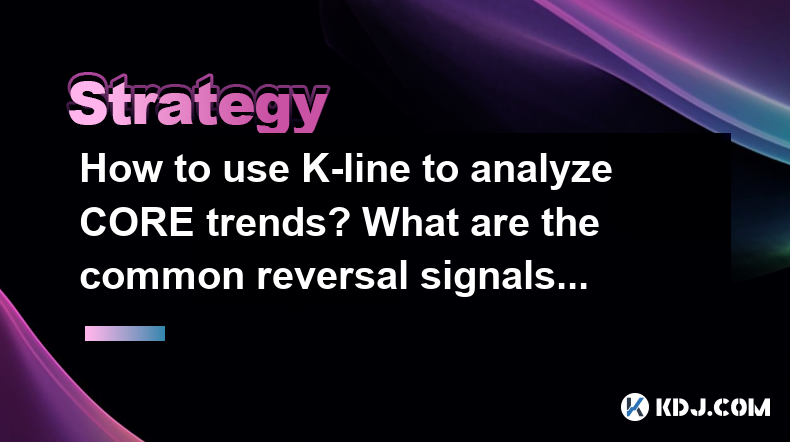
Introduction to K-Line Analysis for CORE
The K-line, also known as the candlestick chart, is a powerful tool used by traders to analyze price movements and trends in the cryptocurrency market, including CORE. By understanding how to read K-lines, traders can gain insights into market sentiment and potential future price movements. In this article, we will explore how to use K-line analysis to analyze CORE trends and identify common reversal signals.
Understanding K-Line Basics
K-lines consist of a body and wicks (or shadows) and represent the open, high, low, and close prices for a specific time period. A green (or white) K-line indicates that the closing price was higher than the opening price, suggesting bullish sentiment. Conversely, a red (or black) K-line shows that the closing price was lower than the opening price, indicating bearish sentiment.
To analyze CORE trends using K-lines, you should focus on the following aspects:
- Body Size: A larger body suggests stronger buying or selling pressure.
- Wick Length: Long wicks indicate price rejection at certain levels.
- Patterns: Certain patterns formed by multiple K-lines can signal potential trend continuations or reversals.
Identifying CORE Trends with K-Lines
To identify trends in CORE using K-lines, you need to observe the sequence of K-lines over time. Here's how you can do it:
- Uptrend: An uptrend is characterized by a series of higher highs and higher lows. On a K-line chart, you will see a sequence of green K-lines with each subsequent high being higher than the previous one and each low being higher than the previous one.
- Downtrend: A downtrend is marked by a series of lower highs and lower lows. On a K-line chart, you will observe a sequence of red K-lines with each subsequent high being lower than the previous one and each low being lower than the previous one.
- Sideways Trend: A sideways trend, or consolidation, occurs when the price moves within a relatively narrow range. On a K-line chart, you will see a mix of green and red K-lines with no clear direction.
Common Reversal Signals in K-Line Analysis
Reversal signals are crucial for traders as they indicate potential changes in the current trend. Here are some common reversal signals you should look for when analyzing CORE trends:
- Doji: A Doji is a K-line where the opening and closing prices are very close or identical, resulting in a small or non-existent body. A Doji indicates indecision in the market and can signal a potential reversal, especially if it appears after a prolonged trend.
- Hammer and Hanging Man: A Hammer is a bullish reversal pattern that appears at the bottom of a downtrend. It has a small body and a long lower wick. Conversely, a Hanging Man is a bearish reversal pattern that appears at the top of an uptrend. It also has a small body and a long lower wick.
- Engulfing Patterns: An engulfing pattern occurs when a K-line completely engulfs the body of the previous K-line. A bullish engulfing pattern, where a green K-line engulfs a red K-line, signals a potential reversal from a downtrend to an uptrend. A bearish engulfing pattern, where a red K-line engulfs a green K-line, indicates a potential reversal from an uptrend to a downtrend.
- Morning Star and Evening Star: The Morning Star is a bullish reversal pattern that consists of three K-lines: a long red K-line, a small K-line (which can be red or green) that gaps below the first K-line, and a long green K-line that gaps above the second K-line. The Evening Star is a bearish reversal pattern that consists of three K-lines: a long green K-line, a small K-line (which can be red or green) that gaps above the first K-line, and a long red K-line that gaps below the second K-line.
Applying K-Line Analysis to CORE Trading
To effectively use K-line analysis for trading CORE, follow these steps:
- Choose the Right Timeframe: Depending on your trading style, choose a timeframe that suits your strategy. Short-term traders might use 1-minute to 1-hour charts, while long-term traders might prefer daily or weekly charts.
- Identify the Current Trend: Use the K-line sequence to determine whether CORE is in an uptrend, downtrend, or sideways trend.
- Look for Reversal Signals: Once you have identified the current trend, keep an eye out for reversal signals such as Doji, Hammer, Hanging Man, Engulfing Patterns, and Morning/Evening Stars.
- Confirm with Other Indicators: To increase the reliability of your analysis, consider using other technical indicators such as moving averages, RSI, or MACD to confirm the signals provided by K-lines.
- Execute Your Trade: Based on your analysis, decide whether to enter a long position (buy) or a short position (sell). Set your stop-loss and take-profit levels accordingly.
Practical Example of K-Line Analysis on CORE
Let's walk through a practical example of how to use K-line analysis to trade CORE:
- Step 1: Open your trading platform and select the CORE/USD pair. Choose a daily timeframe to analyze the long-term trend.
- Step 2: Observe the sequence of K-lines. If you see a series of higher highs and higher lows with predominantly green K-lines, CORE is in an uptrend.
- Step 3: Look for potential reversal signals. Suppose you spot a bearish engulfing pattern after a prolonged uptrend. This could indicate that the uptrend is losing momentum and a reversal might be imminent.
- Step 4: Confirm the bearish engulfing pattern with other indicators. For example, if the RSI is also showing overbought conditions, it strengthens the case for a potential reversal.
- Step 5: Based on your analysis, you decide to enter a short position on CORE. Set your stop-loss above the high of the bearish engulfing pattern and your take-profit at a level where you expect the price to reach during the reversal.
Frequently Asked Questions
Q1: Can K-line analysis be used for all cryptocurrencies, including CORE?
Yes, K-line analysis is a versatile tool that can be applied to any cryptocurrency, including CORE. The principles of K-line analysis remain the same across different assets, making it a valuable technique for traders in the crypto market.
Q2: How reliable are K-line reversal signals?
K-line reversal signals can be reliable, but they should not be used in isolation. To increase their reliability, it's important to confirm these signals with other technical indicators and consider the overall market context.
Q3: What is the best timeframe for K-line analysis on CORE?
The best timeframe for K-line analysis on CORE depends on your trading style. Short-term traders might prefer shorter timeframes like 1-minute to 1-hour charts, while long-term traders might find daily or weekly charts more suitable. It's important to choose a timeframe that aligns with your trading goals and strategy.
Q4: How can I improve my skills in K-line analysis for CORE?
To improve your skills in K-line analysis for CORE, practice regularly on a demo account, study historical charts to identify patterns, and stay updated with market news and events that could impact CORE's price movements. Additionally, consider joining trading communities or forums to learn from experienced traders.
Disclaimer:info@kdj.com
The information provided is not trading advice. kdj.com does not assume any responsibility for any investments made based on the information provided in this article. Cryptocurrencies are highly volatile and it is highly recommended that you invest with caution after thorough research!
If you believe that the content used on this website infringes your copyright, please contact us immediately (info@kdj.com) and we will delete it promptly.
- UAE's Digital Asset Revolution: Stablecoin Regulations Take Center Stage
- 2025-07-26 10:40:11
- VIRTUAL Weekly Drop: Recovery Analysis and Privacy Push
- 2025-07-26 08:50:11
- Bitcoin, Cynthia Lummis, and Freedom Money: A New Yorker's Take
- 2025-07-26 08:30:11
- Pudgy Penguins, Crypto Prices, and the Altseason Buzz: What's the Hype?
- 2025-07-26 10:51:48
- Crypto Gainers, Top 10, Week 30: Altcoins Buck the Trend
- 2025-07-26 08:55:12
- Solana, Altcoins, and Coinbase: What's the Buzz?
- 2025-07-26 06:30:12
Related knowledge
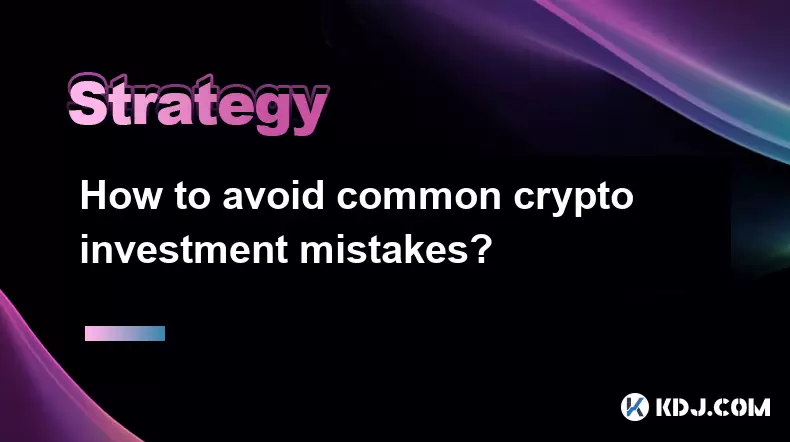
How to avoid common crypto investment mistakes?
Jul 13,2025 at 01:35am
Understanding the Risks of Crypto InvestmentInvesting in cryptocurrency can be highly rewarding, but it also comes with significant risks. One of the ...
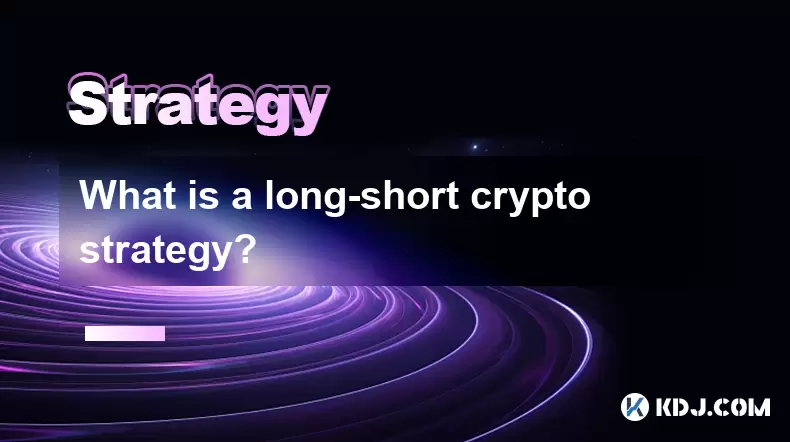
What is a long-short crypto strategy?
Jul 15,2025 at 10:56am
Understanding the Basics of a Long-Short Crypto StrategyA long-short crypto strategy is an investment approach where traders simultaneously take long ...
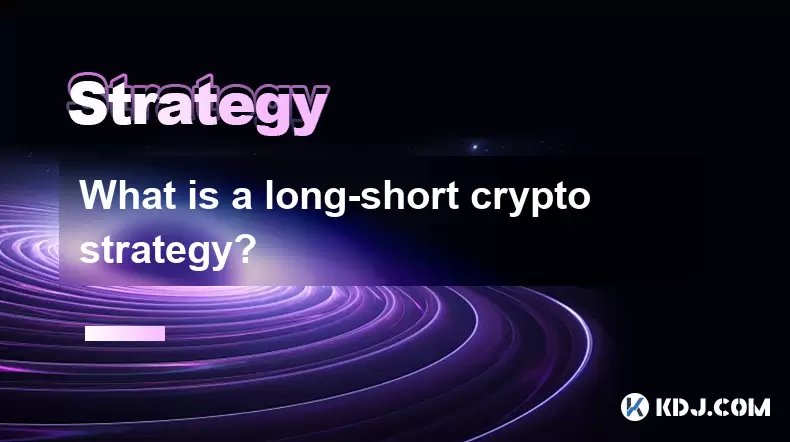
What is a long-short crypto strategy?
Jul 11,2025 at 01:28pm
Understanding the Basics of Long-Short Crypto StrategyA long-short crypto strategy is an investment approach where traders take both long and short po...
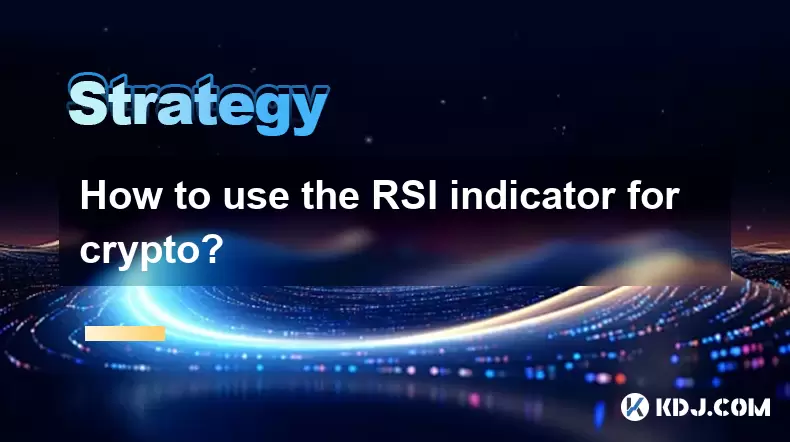
How to use the RSI indicator for crypto?
Jul 12,2025 at 03:56pm
Understanding the RSI Indicator in Cryptocurrency TradingThe Relative Strength Index (RSI) is a momentum oscillator used to measure the speed and chan...

Is copy trading a good strategy for crypto beginners?
Jul 12,2025 at 08:28am
Understanding Copy Trading in the Cryptocurrency MarketCopy trading is a strategy where novice traders replicate the trades of experienced investors a...
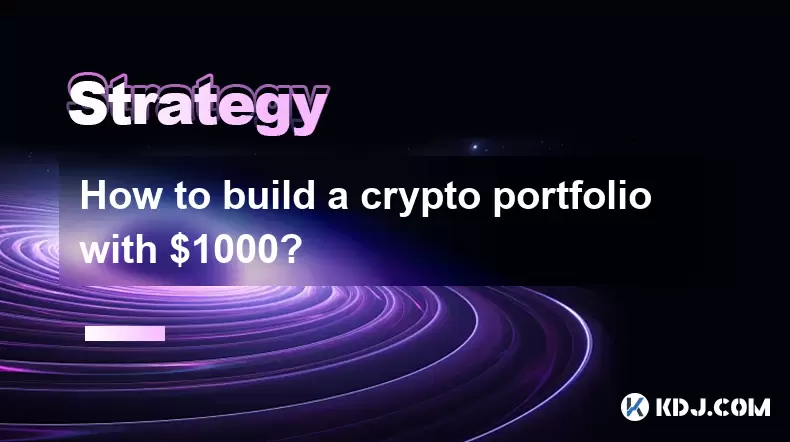
How to build a crypto portfolio with $1000?
Jul 13,2025 at 08:14pm
Understanding the Basics of Cryptocurrency InvestmentBuilding a crypto portfolio with $1000 starts with understanding the fundamentals of cryptocurren...

How to avoid common crypto investment mistakes?
Jul 13,2025 at 01:35am
Understanding the Risks of Crypto InvestmentInvesting in cryptocurrency can be highly rewarding, but it also comes with significant risks. One of the ...

What is a long-short crypto strategy?
Jul 15,2025 at 10:56am
Understanding the Basics of a Long-Short Crypto StrategyA long-short crypto strategy is an investment approach where traders simultaneously take long ...

What is a long-short crypto strategy?
Jul 11,2025 at 01:28pm
Understanding the Basics of Long-Short Crypto StrategyA long-short crypto strategy is an investment approach where traders take both long and short po...

How to use the RSI indicator for crypto?
Jul 12,2025 at 03:56pm
Understanding the RSI Indicator in Cryptocurrency TradingThe Relative Strength Index (RSI) is a momentum oscillator used to measure the speed and chan...

Is copy trading a good strategy for crypto beginners?
Jul 12,2025 at 08:28am
Understanding Copy Trading in the Cryptocurrency MarketCopy trading is a strategy where novice traders replicate the trades of experienced investors a...

How to build a crypto portfolio with $1000?
Jul 13,2025 at 08:14pm
Understanding the Basics of Cryptocurrency InvestmentBuilding a crypto portfolio with $1000 starts with understanding the fundamentals of cryptocurren...
See all articles

























































































